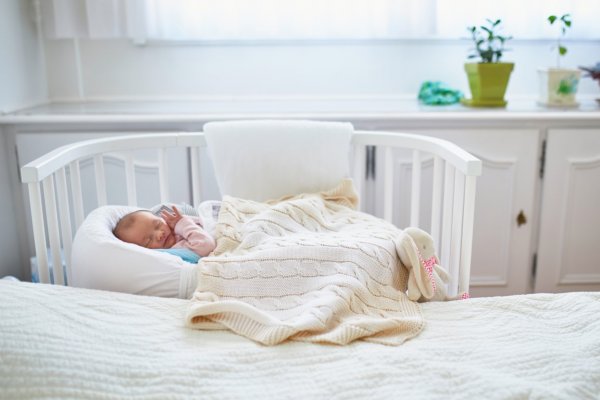At some point in your life, you will get married to your significant other and start a new chapter of your life. The process is quite lengthy and intimidating for beginners as it involves securing financial capabilities, occupation, residence, and, most importantly, good parenting.
Like most people say, "Having a baby is truly a blessing." It sprouts when a couple's love is profound, given the right time at the right person. However, taking care of a newborn is not an easy task. The same goes with choosing a good crib to make their sleep the sweetest of the sweet, day or night.
Once you plan to settle a family with your beloved, it is best to think about the ideal crib for your infant. A crib is a young child's bed with bars on every side and a headboard to protect the baby from any physical injuries. Obviously, you may not want to share your bed with your newborn since it highly risks Sudden Infant Death Syndrome (SIDS).
Today, we will cover the considerations you may want to look at when buying your next crib. As long as you follow our game-changing tips, we assure you that you will get the best crib for your baby on your next trip to the store.
- Comfortable Mattress
There is nothing more important than securing the sleep of your newborn. Since you plan to pick the best performing crib, why not choose the one with a super comfy mattress? According to amerisleep.com, you can ensure your baby's decent sleep by choosing a mattress that is eight to fourteen inches thick.
You may also want to have your mattress dense and firm. Why? The denser the bed is, the greater its durability, so you do not have to replace it often. On the other hand, mattress firmness helps in preventing sleep discomfort and pain.
- Size Matters
Just like how most of us buy a pair of Nike shoes, assuming our feet will still grow, the concept also applies when it comes to choosing a crib. Initially, it is not a big deal if your infant can not stand on its own. However, once your child learned how to sit, stand up, or roll over, it will be a problem. Always remember that your child will soon occupy most parts of the crib, and you may want to pick the one with extra spaces.
- Adjustable Mattress
As an alternative, consider picking a crib that has an adjustable mattress. With it, rest assured you will not have to worry once your baby learns how to stand up or climb the bars.
- Crib Sturdiness
When picking the ideal crib, make sure it is not unstable when you try shaking it. Remember that you need it to be extra durable and reliable to support your beloved baby. If the crib failed your 'shake test,' do not hesitate to reject it.
- Forget About the Drop Side
Initially, drop sides are useful to parents to get their newborn without reaching so far over the side. As convenient as it sounds, it poses a significant threat to babies. According to the United States Consumer Product Safety Commission, cribs with this feature increase the risk of child strangulation and suffocation; that is why selling this type of crib is prohibited.
- A Simpler Headboard is Better
A crib headboard is a must. But adding unnecessary decorations or hanging random props is trivial. As much as possible, choose a simple but durable headboard that can support both the crib and your infant.
- Look Out for Metals
If you happen to afford a second-hand cot from a garage sale, or your generous friend gave his spare one, that is good. Besides checking if it has a drop side, make sure it is free from pointed metals or objects like nails. By doing so, you will reduce the chance of your baby inflicting physical injuries.
- Crib Bars
Another thing to take note of when picking the ideal crib is its bars or slats. Specifically, you may want the width to be 2 inches and 3/8 apart. Another good thing to try is placing a soda can if it will fit in between. If so, do not hesitate to consider another crib for your child's safety.
- Lock on Wheeled Cribs
Yes, we get it. Adding wheels on cribs would make your life easier in case you want to move it. There is nothing wrong with that. But kindly make sure that it is locked to prevent any untimely infant-related accidents.
- Avoid Extra Stuff
Stuffed animals and a mini basketball are some of the great toys to add to your infant's crib to provide extra comfort and joy. It also helps them stay calm in their cot to a certain degree. However, the fun you offer to them also increases the risk of suffocation. We recommend you steer clear of any objects that they might swallow out of curiosity.
- Bumper Pads are Non-essential.
Nowadays, using a bumper for a crib is not suggested. These cotton pads were once designed to prevent your sweetie's head from falling between crib bars. Bumper pads are merely helpful and only risk physical injuries when they try climbing it to wander off their crib.
- Stay Away from Hand-Me-Down or Older Cribs
Included on the U.S. Consumer Product Safety Commission's crib standards are most of the previously mentioned things to consider when getting a new crib. The set of criteria was finalized on the 28th of December 2010 and became effective on the 28th of June 2011. Hence, it is risky to accept free cradles, no matter the sentimental value it has, or buy a crib that was made before the new rules' date was effective.
Cribs are indispensable and serve as the first place that most babies will spend in their early years of life. It is where they learn how to sit, roll over, or even stand. That is why here on Best Review Guide, we encourage all parents out there to give their best when it comes to deciding the ideal crib for their babies. It is always better safe than sorry!





